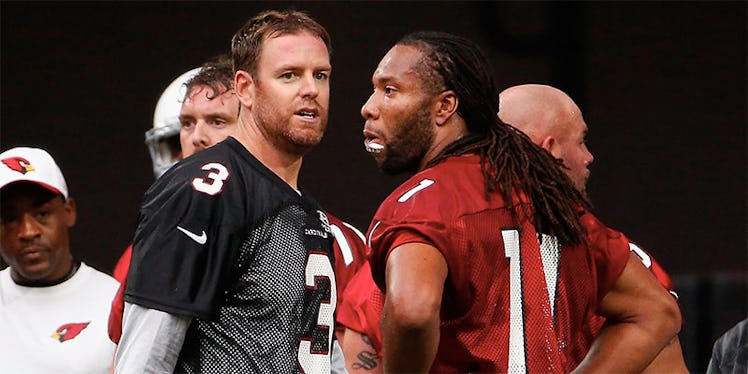
New Study Suggests Football Players Should Be Training Without Helmets
A link between football and brain disease was confirmed by a study, revealing that 87 out of 91 former NFL players tested positive for the brain disease known as chronic traumatic encephalopathy (CTE).
Over the past few years, the future of the sport has come under increased scrutiny as the evidence linking football to CTE continues to grow.
Football officials at the national and collegiate level are under increased pressure from fans and doctors alike to take action to protect their players from neurological conditions that stem from the frequent concussions and head impacts the sport is known for.
The NFL placed a ban on players tackling with a blow from the crown of the head in 2013, but football head injuries captured the public spotlight last year, after post-mortem studies on a deceased 25-year-old ex-football player revealed extremely high rates of CTE.
Plenty of research has been conducted on ways to reduce head injury in football players, but most have been focused on how to improve helmets and other headgear, until now.
A recent study published in the Journal Of Athletic Training revealed a college football team that began training one to two times a week without helmets saw a 30 percent reduction in the incidence of head impacts for players by the end of the season, as compared to a control group of helmeted players.
The idea that football players should practice without protective headgear in order to reduce brain injury is counterintuitive, but the research behind it holds solid.
Rugby players, who tackle each other at the knees and do not wear hard-shell helmets, suffer far fewer head injuries than football players.
As a matter of fact, the incidence of head injury in football players actually grew enormously in the '50s and '60s, after the introduction of hard-shell protective headgear, behind which players often feel safe enough to not fear the dangers of frequent head collisions.
With these two pieces of evidence, Erik Swartz, the leader of the study and chairman of the department of kinesiology at the University of New Hampshire, hypothesized that the problem of football head injuries could be solved with a different approach to tackling strategy.
After getting consent from the football coaches at UNH, Swartz created training drills for UNH football players that focused on proper tackling technique, and prohibited direct spearing of the head.
The players practiced without helmets twice weekly during the pre-season, and once a week during the regular season.
By the end of the season, the football players who participated in Swartz's helmet-free training program were able to tackle each other and play successfully, without using their heads as battering rams.
What's also compelling (at least from a practical standpoint), is that the coaches observed that these players were actually tackling more effectively than the control group of players, who still practiced with helmets.
Swartz's findings underscore the importance of proper form and technique from a medical and tactical perspective.
There isn't sufficient evidence at this point for football coaches to start banning helmets during practice, but the unexpected success of the training program without helmets pushed Swartz and his team to begin an extensive study with college and high school football players to examine the program at every level of game play.